
My hummingbird is happy for the change…in me.
A newly cleaned and freshly filled reservoir hangs, brimming with cool nectar, in what feels like September’s first fall breeze. I’d gotten lazy in my tending of the small, plastic globe suspended from the eave of the upstairs front porch and blamed, instead, the awful August heat for the mildew-blackened holes and clouded liquid of the neglected hummingbird feeder.
The demands of summer ran away with me. Carefree hours spent on the porch watching hummingbirds dart in for long drinks or perch quietly within firing range and zoom back around in defense of the plastic flower soon dwindled to nothing. And as the birds themselves disappeared in my neglect, so did my desire to spend time porch-sitting.
Before long, a faded and revoltingly dirty (and unhealthy) feeder was the only hint that remained to suggest that this had once been a place of great joys.

A couple of weeks ago, I spent a few days with a friend.
The hum and whir of birds outside her doorstep began at dawn and continued through the day until dark. Back and forth they’d travel by the dozens to the sizable reservoir—hers always fresh and full—hanging near a copper bucket tucked and fastened beneath the eave.



Flowers filled her yard.
As you’d expect from one whose life has been largely devoted to caring for and nurturing even these tiniest of winged creatures, many plants had been chosen as natural nectar sources. But the artist’s eye and poet’s soul had gone beyond to create a beauty so lively and rich, that it remained after dark, afloat on the air of a night lit only by full moon and fireflies.
And I drank it in.




And remembered the places and stories that had first registered those feelings of connectedness, the inspiration that flows with her words from the page.


The friendship that I can only describe as a ball of yarn--
cords wrapped this way and that, intertwined one with another,
until I can no longer tell where it began.
I only know that, with time, it has gotten bigger.


Dropped back into my daily routine from this refresher of sorts, I began with an overhaul of the feeders.
After all, I know what it is to be thirsty.



Monday, August 29, 2011
Refilling the Feeder
Tuesday, August 23, 2011
Have you seen...
I had just made the last trip outside for the night, flipping on the porch light and grabbing the few remaining items from the clothesline across the yard. Glad that I’d caught them before the heavy summer night could leave its cool dampness with them once more, clothes in hand, I moved mindlessly toward the back door, already falling into sleep.
The sounds from the woods and field, strong and rhythmic, buzzy, buggy--on any other night would have lured me into the darkness for one last pass on the trails before bedtime. But an early morning had already left me salivating for a delicious sleep to the tune of nighttime noises.
At my feet, frozen mid-stride in the light of the back porch, a small and muddied, wide-eyed bug paused on the concrete slab.
Not an insect drawn to light, he stumbled clumsily along on over-sized forelegs more suited for digging than walking and with a rounded profile that gave him an appearance less like a beetle, more like a bullet—a very slow one—poorly aimed and off course to arrive beside my back door.
In the several seconds that it took me to stoop and scoop the dirt-clad vagabond into my hand for a closer look, I had already come to recognize just what he was. The context was what, at first, had stumped me.
By mid-summer, lifeless hulls of annual cicadas garnish every vertical surface around my yard—tree trunks, garden plants, even the cedar shakes of the house. In their metamorphosis from subterranean, root-feeding nymphs to noisy, sap-sucking songsters of a heated afternoon, these large, loud relatives of tree hoppers and aphids emerge as adults, leaving behind translucent shed skins, still holding fast with clawed feet to their upright post.
The molted skins, split up the back and empty of their residents, are as common by July as the day is strong with song.
And, though I find their small exit holes scattered between blades of grass across the lawn, I’ve never found a nymph alive and walking—trundling in the dark from a life underground to a winged life in the sky.
He sat barely moving, caked with clay in my curled hand, deep shades of green peeking through the golden brown shell where dirt from his underground passage had been brushed bare. Then, stepping past the laundry basket and off the well-lit porch, I carried him into the darkness of the yard and set him at the base of Mother Maple.
Slowly and steadily he climbed to a lichen-covered knob of bark on the old, trusted tree, his heavy body seemingly quite a challenge for legs that lift little, knowing only a life underground.
Then, from the dirty, dusted shell, a peek of color as his newly-minted form emerged—an emerald-trimmed body with still-curled, turquoise wings, a face studded with 3 spots of gold, 2 widely-set eyes of jade.
 12:19 am
12:19 am
See the 3 spots of gold in the center of his face?
They're tiny additional eyes (ocelli) which lie between his larger, widely set eyes!
"Have you seen...." is an effort to discover the unusual beauty in things not usually appreciated for their beauty.
Tuesday, August 9, 2011
The Birding Curve
“The prothonotary has returned!” he said.
But as I stepped onto the wooden-planked path looping the lake at our local nature center, the excitement this announcer had hoped to read on my face as he joyfully told me of his discovery was clearly absent.
I didn’t know this bird and, although I might have been able to conjure up a vague image in my mind from browsing the plates of warblers in my field guide, the proclamation of its presence there meant little…to me.
Years later, I would learn this bird while walking one summer afternoon on another wetland boardwalk, deeply shaded and winding between tall swamp cottonwood trees that stood in several inches of water.
A ringing call had stolen my attention from the black-winged damselflies that were knitting up the frayed edges of a patch of sunlight--a brief, bright spot in the darkened, wet woods. The song's source had eluded me, though, for quite some time, as I stood peering past the thick, leafy cover where a small bird restlessly flitted, low to the ground, foraging close to the water’s edge.
Eventually, I matched both sound and sight to the boldly yellow-colored warbler in my field guide--the Prothonotary.
An afternoon’s shelter from the strong light and heat of July and my pursuit of ebony jewelwings had given me a life bird, time to stand and watch it work this wetland habitat, time to soak in the rich sound as it spread across the water, golden as the bird from which it flowed.
For the remainder of that summer, I found prothonotary warblers everywhere.
From beside every lake that I canoed,
every quiet river that I kayaked,
every river-rimmed trail that I hiked, I found the song and it followed me--and often, gave a glimpse of the golden bird--until I knew it well and understood the joy of finding its return.
This summer I walked again on the wetland boardwalk where I’d first found my prothonotary warbler, though this time it was butterflies that were on my mind—Baltimore Checkerspots.
In the sunny meadow, a handful of the uncommon flutterbys skipped, barely stopping to nectar
before whisking past and out of camera range.
Pleased that I’d timed my visit to find them flying, yet discouraged that in their flying, I saw so very little of them, I wandered slowly back along the boardwalk to the point where it passed into the darkened cottonwood swamp once again.
A small flock of cedar waxwings crossed the cattail marsh and landed just overhead, lining up shoulder-to-shoulder on the graceful branches of several small willows. Dragonflies paused in the sunshine of the wooden boards, then rose to course above its sedge-filled edges and tall reeds just out of reach of 2 green frogs sitting neck-deep and motionless in the cool water of the fen. Their watchful eye, for this moment, had turned to the northern water snake gliding silently behind them.
Yes, everything about this picture of a still, wooded wetland should suggest a prothonotary warbler. And, if the mangrove forests of coastal Central and South America had sustained him for the winter, the bird I found last year would be back to breed here once more.

Through the darkened woods, across the water that stretched between the cottonwood trees, came the resounding call—clear and bright as the little bird behind it. And, in knowing the bird, hearing his song as I’d heard it before in the very same spot along the trail, my heart made just a little extra beat.
No one felt it but me.
“The prothonotary had returned!”
The Prothonotary Warbler, Protonaria citrea, breeds in hardwood swamps and forested lakeshores of the southeastern United States and is named for the scribes (prothonotaries) in the Roman Catholic Church who wore golden, hooded robes. Dubbed the Golden Swamp Warbler by John James Audubon, it is the only eastern warbler to nest in tree cavities, often using the excavated holes of Downy Woodpeckers and building mossy nests in trees near or over standing water.
Adults forage in low foliage for aquatic insects, snails, flies, beetles and spiders.
Because the prothonotary warbler is extremely habitat specific, habitat loss (wooded wetlands in the southeastern US and mangrove swamps of Latin America) may cause this species to decline.
 No matter where you might be on the birding curve—whether you’ve learned the prothonotary’s ringing call or have never even heard of such a bird, whether you’ve mastered all the species’ migration routes or are still fumbling to find the focus wheel of your binoculars—the Midwest Birding Symposium has something in it for YOU!
No matter where you might be on the birding curve—whether you’ve learned the prothonotary’s ringing call or have never even heard of such a bird, whether you’ve mastered all the species’ migration routes or are still fumbling to find the focus wheel of your binoculars—the Midwest Birding Symposium has something in it for YOU!
There’s no better way to improve your skills, than to put yourself smack in the middle of a bunch of better birders—experts who are passionate about sharing something they love with another and super-nice folks who fondly remember exactly where they were when someone showed them their first life birds.
It’s not too late to get registered.
You’ll be surprised how much fun birds and birders can be!
I’d love to see you there!
Monday, August 1, 2011
Heat
Like many others, I’ve been kept off the trail for days by this extreme heat--a wave so wide-ranging and long-lasting that I’m hard-pressed to find a direction to explore, a place escaping the blanket of humidity that, each day by dinnertime, catapults the heat index well above 100 degrees. Waiting out its wrath from within my air-conditioned cocoon, the only exercise I’ve undertaken in these last days has been little more than wading through a backlog of images.
Though the comfort index was much greater weeks ago, lacking the humidity of late July, each retreat into the shaded woods from the blazing sun above the boardwalk was a welcome respite. Although the greatest attraction of this fen, for me, would be the sedge meadows, these wet woods hold their own allure in the shadow and light. Tall, straight stands of tulip poplar mingle with a dense growth of white cedar and black ash. Sprawling arms of poison sumac tempt the unknowing for a touch. And the faded forms of spring’s first green, skunk cabbage, now lie lazily on the dark, rich soil.
Just in front of me, a large fishing spider drops quickly on a long thread and hangs, revolving slowly, at eye level. Well-camouflaged against the backdrop of trees in this dim interior space, her silver cord runs up to a tulip bough and catches what little light passes through the leafy canopy to the boardwalk below.
Bright light ahead indicates the first brief patch of sedge meadow. These open areas, bathed in just several inches of cool, crystalline water, are filled with a tangle of sedges, grasses and forbs and hide one of Cedar Bog’s most beloved summer citizens—the Elfin Skimmer dragonfly. Endangered in Ohio and known in only 3 sites statewide, this smallest of North American dragonflies at less than an inch in length is a tiny relative of the much larger and more common Common Whitetail, often seen cruising the edge of my pond in great numbers for months each summer.
Elfin Skimmers on the other hand, are found only in bogs and fens, and then, in only select isolated communities. Almost impossible to spot at rest, the yellow- and black-striped females are easily overlooked in flight as well, looking more like wasps than dragonflies.

Kneeling down on the heated boards and scanning the sedge mat, I am finally able to see several bluish elfin males barely clearing the tips of the stems as they flit from post to post, patrolling tiny, invisibly-marked territories one foot from the ground. From this angle, nose to the ground and leaning as far into the meadow as I dare, while still being firmly planted on the boardwalk, I notice that there’s even a pair in a mating wheel!
They’ll live out their lives right here, as countless visitors walk past--never straying from this sedge meadow, leaving eggs that will hatch into larvae and feed in the very same shallow and cool, clear water of this protected fen.
Most will never even see them.
Another shaded section soon empties once more into a sunny sedge meadow. Through the dense stems, spots of brilliant pink peek out from above pools of shallow water. This is Grass Pink, an orchid, whose presence here with the ferns and sedges and grasses, indicates high quality ground water.
More than just another pretty face, this master of deception presents its flower upside down, as compared to other orchids, luring bees to its tempting upper lip, but offering no reward of nectar or pollen. The baffled bee falls backward onto the stigma (reproductive part of the plant) as the attractive upper lip drops down under its weight, and pollen on his back pollinates the flower. With a closer look, you can see how this ploy would work; from a distance, they’re nothing more than pretty spots of pink, barely standing out against a sunny meadow.
A couple emerges from the shaded path in the woods and hurriedly walks past me, continuing their course along the trail. Perhaps they’ve seen this all before—
the rare, tiny dragonflies,
the clever orchids peeking from the grass.
But I would hazard a guess that they have not.
Not for lack of time, nor retreat from the heat, nor lack of knowledge that these things exist—for the bounty of rarities found in Cedar Bog is well-proclaimed.
But for the very reason that tiny dragonflies and clever flowers have in this day become a rarity—
to many, those things just don’t matter... enough.



























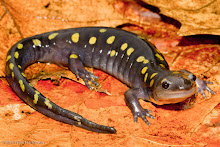


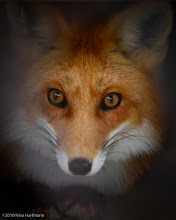

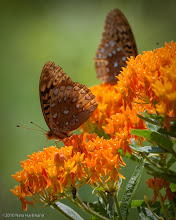

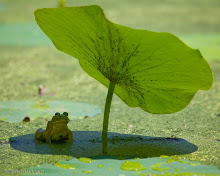
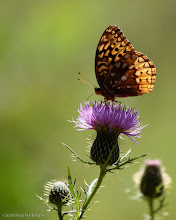
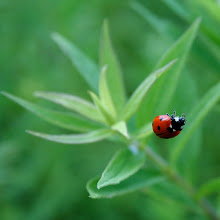



















%20copy.jpg)













